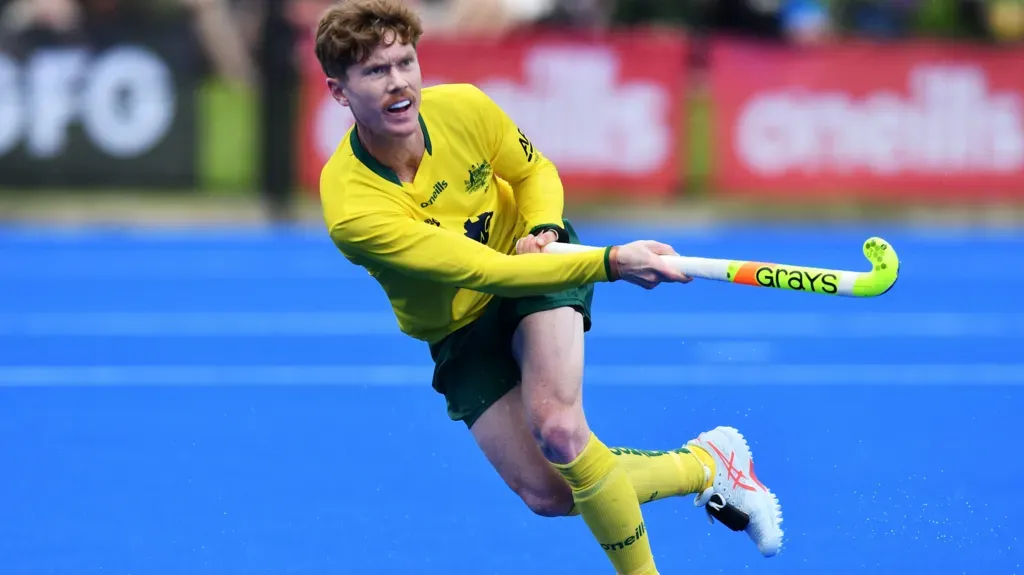Introduction
In a remarkable demonstration of commitment and sacrifice, Australian field hockey player Matt Dawson has chosen to amputate part of his finger to compete in the Paris Olympics. Dawson’s decision, driven by his relentless passion for the sport and his desire to represent his country, underscores the lengths athletes are willing to go to achieve their dreams. This article delves into the details of Dawson’s decision, the impact on his team, and the broader implications for athletes facing extreme challenges.
The Incident: An Unexpected Injury
A Devastating Injury
On a routine training day in Perth, Australia, Matt Dawson suffered a severe injury that would dramatically alter his Olympic journey. The incident occurred two weeks prior to the start of the Paris Olympics. During a practice session with his team, Dawson sustained a serious fracture to a digit on his right hand. The severity of the injury was such that immediate medical attention was required.
Initial Reactions and Medical Consultation
The break was so significant that Dawson fainted upon seeing the damage to his finger in the changing room. Faced with the grim prospect of a lengthy recovery period, Dawson feared his Olympic aspirations were slipping away. His initial reaction was one of shock and despair, as he grappled with the reality of potentially missing out on what would be his third Olympic Games.
The Decision: Amputation as a Path to Compete
Consulting Specialists
Faced with a choice between traditional surgical repair and amputation, Dawson sought urgent advice from a plastic surgeon. The medical professional outlined the potential outcomes of each option. Repairing the finger surgically would require a substantial recovery period, possibly spanning several months, and there was no guarantee of full functionality upon healing. Conversely, amputating the finger would enable Dawson to return to competitive play in a much shorter timeframe—approximately ten days.
Weighing the Options
Despite the emotional and physical toll of such a decision, Dawson opted for amputation. The urgency of the situation, combined with his profound dedication to the sport, led him to choose this drastic measure. Dawson’s decision was also influenced by his awareness of the fleeting nature of his athletic career. At 30 years old, he recognized that this might be his final opportunity to compete at the highest level, and he was determined not to let an injury derail his dreams.
The Impact on the Team: Reactions and Support
Team Dynamics and Captain’s Perspective
The decision to amputate a part of his finger shocked Dawson’s teammates and coaching staff. Team captain Aran Zalewski expressed the surprise and awe felt by the squad. The reaction was one of mixed emotions, ranging from disbelief to deep respect for Dawson’s commitment. Zalewski noted that such extreme measures reflect the sacrifices athletes make for their careers. The decision sent ripples through the team, but ultimately, they rallied in support of Dawson’s choice.
Coach Colin Batch’s Perspective
Kookaburras coach Colin Batch acknowledged Dawson’s extraordinary commitment to the sport. Batch praised Dawson for his dedication, stating that while he might not have made the same choice, he respected Dawson’s decision. The coach’s support underscored the team’s collective admiration for Dawson’s resolve and willingness to overcome significant obstacles.
Dawson’s Past: A History of Overcoming Adversity
Previous Injuries and Triumphs
Dawson’s decision to amputate his finger was not the first instance of overcoming severe injury in his career. In the lead-up to the 2018 Commonwealth Games, Dawson faced a near-catastrophic injury when a hockey stick struck his eye. Despite the severity of the injury, Dawson continued to play and contributed to the Kookaburras’ gold medal victory at the tournament. His resilience was further demonstrated at the Tokyo Olympics, where the team won a silver medal despite Dawson’s ongoing recovery.
Broader Implications: Athlete Sacrifice and Commitment
The Nature of Athletic Dedication
Dawson’s extreme decision highlights the extraordinary lengths to which athletes are prepared to go to achieve their goals. His story exemplifies the deep commitment and personal sacrifices often required to compete at the highest levels of sport. Athletes frequently face physical, emotional, and psychological challenges that test their endurance and determination.
The Role of Support Systems
The support from Dawson’s teammates and coach reflects the close-knit nature of sports teams and the importance of mutual encouragement and solidarity. The willingness of his colleagues to stand by him during such a challenging time underscores the camaraderie and mutual respect that define successful athletic teams.
Conclusion: A Testament to Perseverance
Matt Dawson’s decision to amputate part of his finger in order to compete in the Paris Olympics is a powerful testament to the resilience and dedication of athletes. His story serves as an inspiring example of how far individuals will go to pursue their dreams, even when faced with daunting obstacles. As Dawson prepares to take the field with the Kookaburras, his remarkable journey will undoubtedly resonate with fans and fellow athletes alike, embodying the spirit of perseverance and unwavering commitment.


